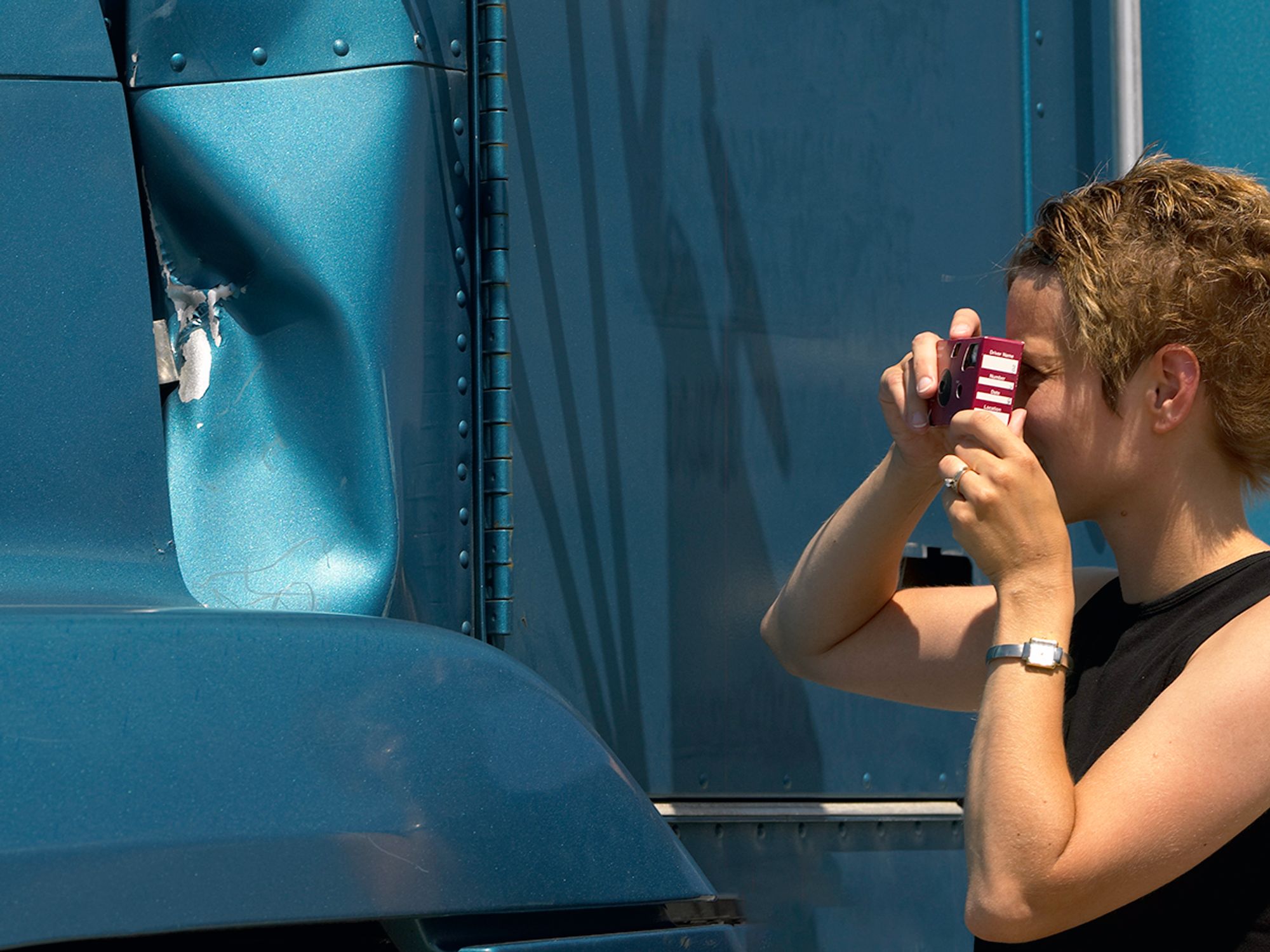Accident photographs

- Accident photographs are a helpful tool and a necessary part of the investigation process.
- Those designated to take photographs should be trained on how, when, and where to take them.
In many accidents, photographs provide the most telling details. From a photograph, an accident reconstructionist can often determine how an accident occurred. If equipped with a camera, the driver should take a set of photographs.
If the company or its insurance carrier are unable to take photos before the scene is “cleaned up,” they may have to depend on any photos taken by the driver. This is yet another reason for companies to make sure their drivers have received proper training in what to do in case of an accident (and are provided with a camera).
If the carrier (or their investigator) are able to be at the scene while the vehicles are still there, another set of photos should be taken. One extra picture may provide the missing clue needed to reconstruct the accident. Even after the accident scene has been cleared, there may still be value to pictures of the scene, showing terrain, traffic signals, and road conditions.
What photographs should (and should not) be taken?
Photographs are critical to reconstruct an accident accurately. But to do that, the pictures must be taken properly. Among the pictures to take are:
- A wide shot taken from the fog stripe on the edge of the road looking toward the point of impact, showing the final location of the vehicles;
- Wide shots taken from the center line of the road showing the road in both directions and the final location of the vehicles;
- Wide shots from all sides of all vehicles involved, including damages of all kinds. Close-ups of damage can be taken. (While this is helpful in determining repair costs, priority should be given to the wide shots listed above, which are more useful in an investigation. Pictures of the damage can also be taken later.); and
- Close-ups of any skid marks, gouges in the road, and debris on the roadside.
There should NEVER be photographs taken of people who have been injured or killed at an accident. If the accident winds up in litigation, the plaintiff may use these photographs in court. Pictures can sway a jury regardless of the facts of the case. And, the company will be asked why it was necessary to take those photos in the first place.
Employers should explain what each picture shows and where they or the driver were standing when it was taken.
